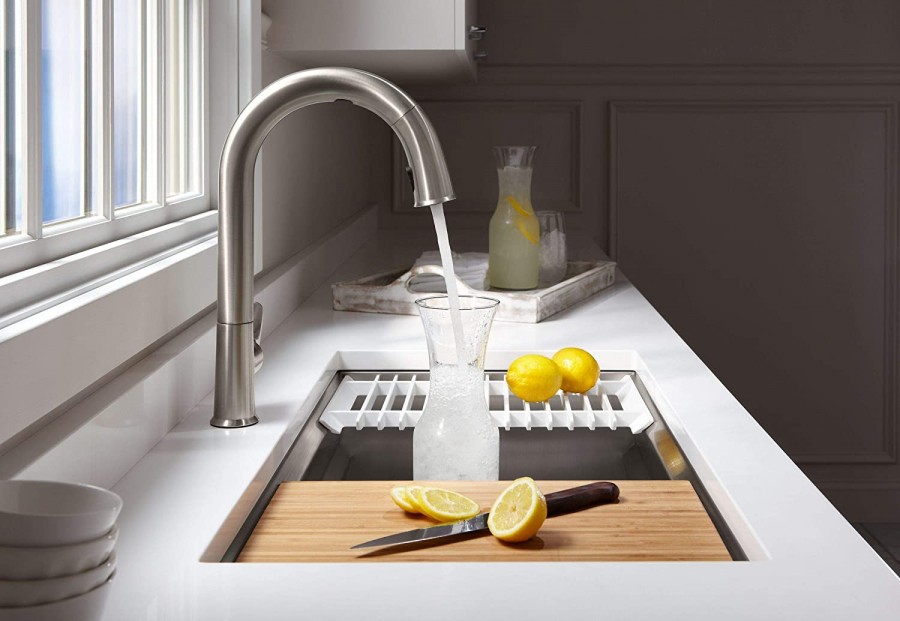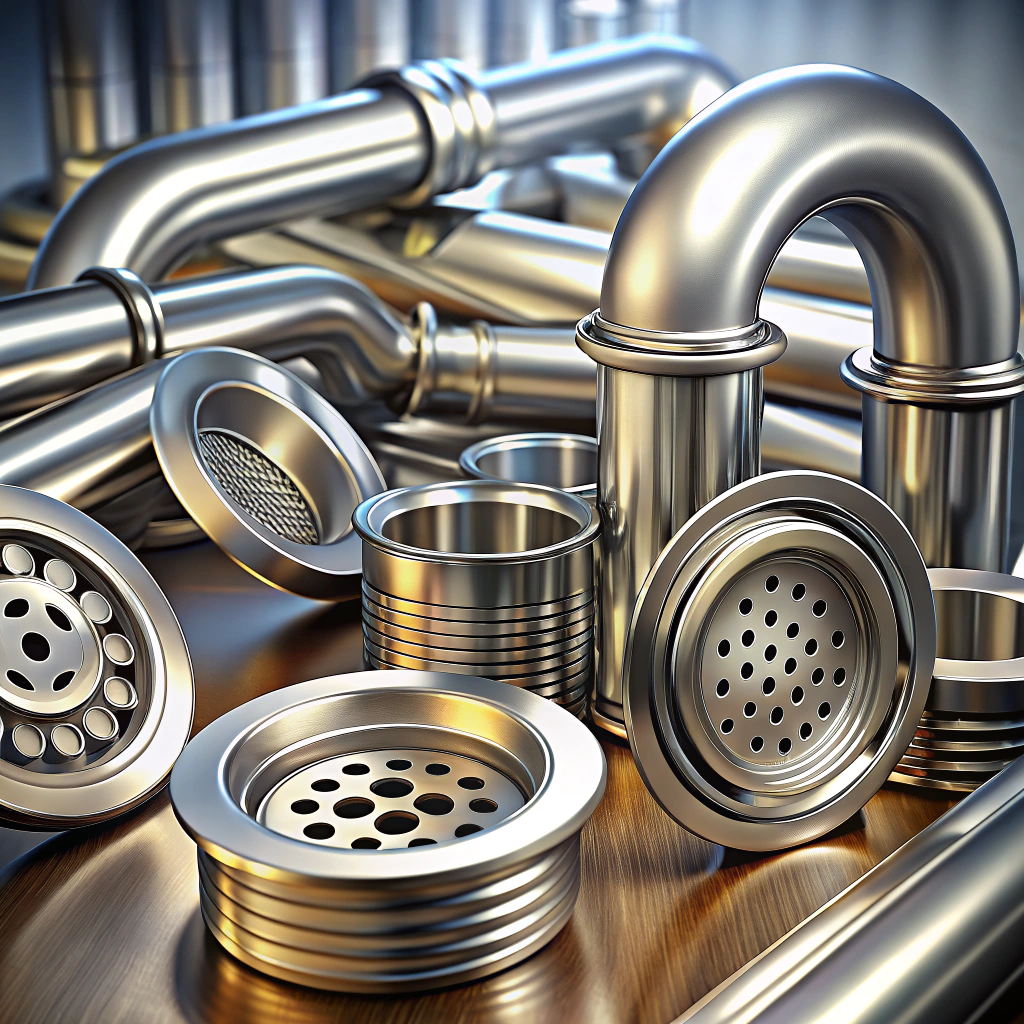Last updated on
The short answer is, yes, touch and touchless kitchen faucets are reliable. Here’s everything you need to know.
How many times have you used your beautiful kitchen faucet with greasy hands only to leave the filth on it? Having to clean yet another thing in the kitchen is never a desirable outlook.
The touch-on and touchless kitchen faucets sound like a great option then, even if a bit more expensive. The idea of turning the water on and off by tapping anywhere on the faucet or simply moving your hands near one sounds very convenient. As we move to a smart home more than ever, all-new features are welcome — these aren’t just electronic and include more traditional features like hard water faucets, wall mount faucets, etc.
The real question is, are they reliable enough to last a while? We aim to answer the question in this article, and we do that by looking at how these two types of faucets work and their pros and cons.
Let’s begin! You’ll notice the shopping links in this article (they earn us a commission) that cost you nothing extra.
What's Inside
The Difference Between the Touch and Touchless Faucet?

We are talking about two different types of faucets — touch and touchless. The most obvious difference between these is that the touch-sensitive versions respond to physical contact, and the touchless models detect movement in front of them without physical contact.
Some people think that there’s a difference in the reliability of the automatic mechanism — touch vs. sensor technology — while others say it doesn’t really make a difference because they both have good high-tech components.
With this debate, it isn’t easy to decide on which type of faucet is more reliable. But even with all this new technology, most people don’t know how these new electronics will affect their utility bill when comparing them to the traditional taps installed some 10 years ago with no electronics inside them.
Again, it’s difficult to compare apples to oranges: one cheaper long-term investment or a more expensive splurge? Both faucets have pros and cons.
Let’s see how each type of faucet works and what their pros and cons are.
How Do Touch-Sensitive Faucets Work?

Quite interestingly, the way that a touch-sensitive faucet operates all comes down to static electricity. When we touch anything with our hand, it releases a static charge due to capacitance which is an electric charge that is supplied by storing your hand’s energy in your body. The sensor on a touch-sensitive faucet has pushed this idea one step further and does not react to one particular area of contact (like a button or a pad) but rather responds when something touches it briefly.
It is important to note that many models (both touch and touchless) also have the traditional function. That is, if the electronics break or the battery is low, you can still use them the traditional way of turning the handle.
Finally, you need to understand that these faucets employ electronics and so they are powered by a battery. That means it has to be regularly charged.
Pros of Touch Faucets
There are two reasons people might use touch kitchen faucets. First, it saves you money because water is becoming increasingly expensive. Secondly, it’s environmentally conscious.
The good thing is that running your hands under water without touching a handle to turn it off can help cut down the bacteria and germs on your hands, so you’re not spreading them all over the kitchen.
Another good thing about this faucet is how easy they are for young children to swap on and off without accidentally turning on hot water or getting burned from touching metal.
Finally, if you live in an area where winters get freezing, consider getting one with a motion sensor. When someone enters the bathroom, they will automatically turn on the sink without sliding their fingers across the glass (or stainless steel) to do so.
Cons of Touch Faucets
Some homeowners don’t consider touch faucets because they cost more than traditional sink faucets, but they can save you money in the long run. Less water is consumed since the faucet shuts off when not being used (which is automatic).
Installation of a touch faucet is more involved with standard sink faucets. If power isn’t a problem, then electrical power usage may go up. However, some models use alternative power sources, and some models use electricity and battery for power backup.
The installation process may take longer on these faucets as opposed to traditional ones. So some people opt out simply because this extra complication.
How Do Touchless Faucets Work?

Touchless faucets work in the same way that touch-type faucets do, but with sensors. These sensors detect infrared light or movement, and they turn the faucet on or off. The touchless type of faucet can sense infrared light or movement that comes from your hand. After detecting this movement, the motion will trigger a sensor to turn on or off accordingly.
Like other sensors, touchless ones can also sense infrared lights in a dark area by reflecting your hands’ light. This reflex helps you make sure then you’re making legitimate movements, not because there’s an animal in front of it since it’s undetectable otherwise, which would cause them to flow still even when you didn’t want them to.
Pros of Touchless Faucets
In addition to the benefits of touch faucets, touchless faucet technology also offers some of its own. Furthermore, these units cool down faster than their alternatives, so the person’s arms don’t get tired from waiting.
They aren’t likely to give you burns as you do not have any direct contact with them — an issue that is usually frowned upon with traditional faucet models.
Child-proof manufacturing materials are incorporated to make it near impossible for a child to activate and turn on the device.
These technological improvements save money on electricity which indirectly saves money for the consumer.
Cons of Touchless Faucets
Touchless and touch models of faucets do more or less the same thing, with the bigger differences being the cost and if it needs electricity or batteries to work when there is a power outage.
Whether it is touchless or not, monitoring water usage is important because some people run dishes under running water by accident.
The Verdict
For kitchens without prevention against water flows from dirty hands, touchless faucets can be preferred. Touchless faucets can also handle otherwise difficult-to-wipe surfaces like pots. If you are frequently turning on the kitchen sink with dirty hands you would benefit from a touchless option.
As long as the manual activation zone of touchless faucets is available near your hand, you won’t need to transfer any bacteria and grease to the faucet hardware when activating it manually with your elbow and wrist (a concern for certain people.) Touch activated units control flow so that you avoid lasting stains by turning off water flow after use.
When it comes to reliability, it very much depends on the model. Most modern touch and touchless faucets are very reliable, and people don’t have any major complaints after years of use. The only concern is the battery life and what happens when it runs low (the problem is solved by faucets having the option to work the traditional way as well).
FAQ
Batteries last from 6 months to 2 years in touchless (as well as touch) faucets. It depends on the battery (alkaline vs. lithium) and its quality.
Touch and touchless faucets may use any source of power, just like any electronic device. Typically they use batteries rather than AC electricity.
Most models have the option to control them manually.




